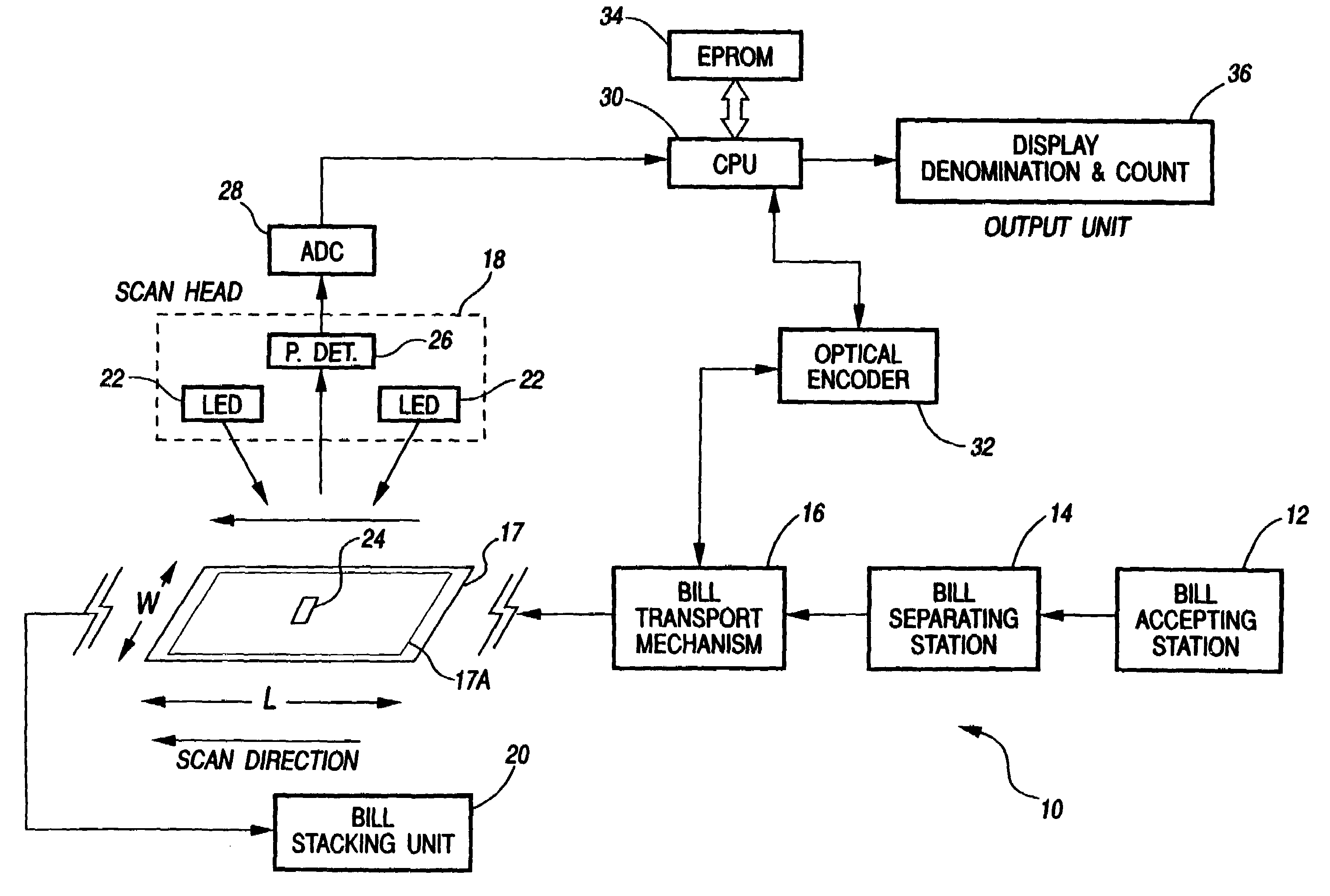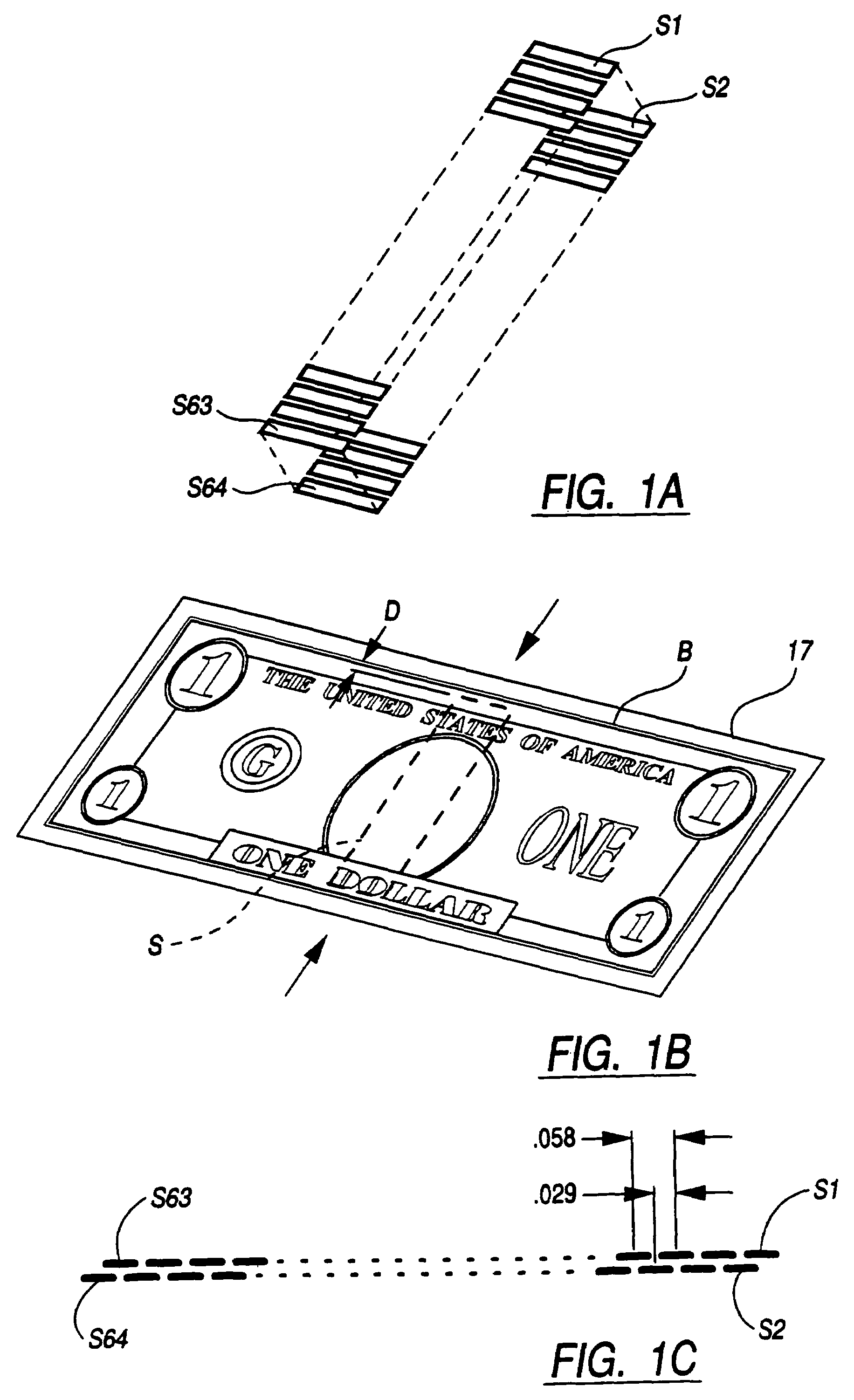Method and apparatus for currency discrimination
a currency and discrimination technology, applied in the field of currency identification, can solve the problems of requiring a correspondingly longer period of time to process data, slowing down the rate at which incoming bills may be scanned, and requiring a correspondingly large amount of time, so as to achieve efficient discrimination among bills, high degree of accuracy, and high speed
- Summary
- Abstract
- Description
- Claims
- Application Information
AI Technical Summary
Benefits of technology
Problems solved by technology
Method used
Image
Examples
Embodiment Construction
[0044]Referring now to FIG. 1, there is shown a functional block diagram illustrating the optical sensing and correlation system according to this invention. The system 10 includes a bill accepting station 12 where stacks of currency bills that need to be identified and counted are positioned. Accepted bills are acted upon by a bill separating station 14 which functions to pick out or separate one bill at a time for being sequentially relayed by a bill transport mechanism 16, according to a precisely predetermined transport path, across an optical scanhead 18 where the currency denomination of the bill is scanned, identified and counted at a rate in excess of 800 bills per minute. The scanned bill is then transported to a bill stacking station 20 where bills so processed are stacked for subsequent removal.
[0045]The optical scanhead 18 comprises at least one light source 22 directing a beam of coherent light downwardly onto the bill transport path so as to illuminate a substantially ...
PUM
 Login to View More
Login to View More Abstract
Description
Claims
Application Information
 Login to View More
Login to View More - R&D
- Intellectual Property
- Life Sciences
- Materials
- Tech Scout
- Unparalleled Data Quality
- Higher Quality Content
- 60% Fewer Hallucinations
Browse by: Latest US Patents, China's latest patents, Technical Efficacy Thesaurus, Application Domain, Technology Topic, Popular Technical Reports.
© 2025 PatSnap. All rights reserved.Legal|Privacy policy|Modern Slavery Act Transparency Statement|Sitemap|About US| Contact US: help@patsnap.com



